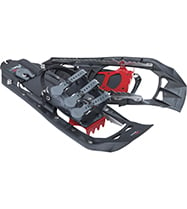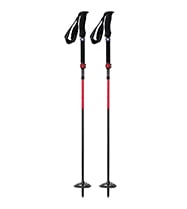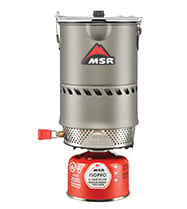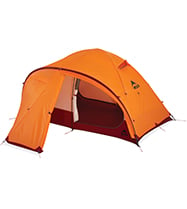5 Awesome Alternatives to Ski Resorts This Winter
Let’s face it: resort skiing can be great, but it’s not for everyone (or the planet). With single-day lift tickets cracking the $200 mark and mile-long parking and lift lines at many mountains, maybe—just MAYBE—sitting in a dank, humid lodge or getting turned away at the parking lot just aren’t on your to-do list for this year. Lucky for us, winter is a total playground and there are a ton of alternatives to ski resorts for winter fun. Here’s a quick reminder of some fun to be had that doesn’t involve a chair lift.
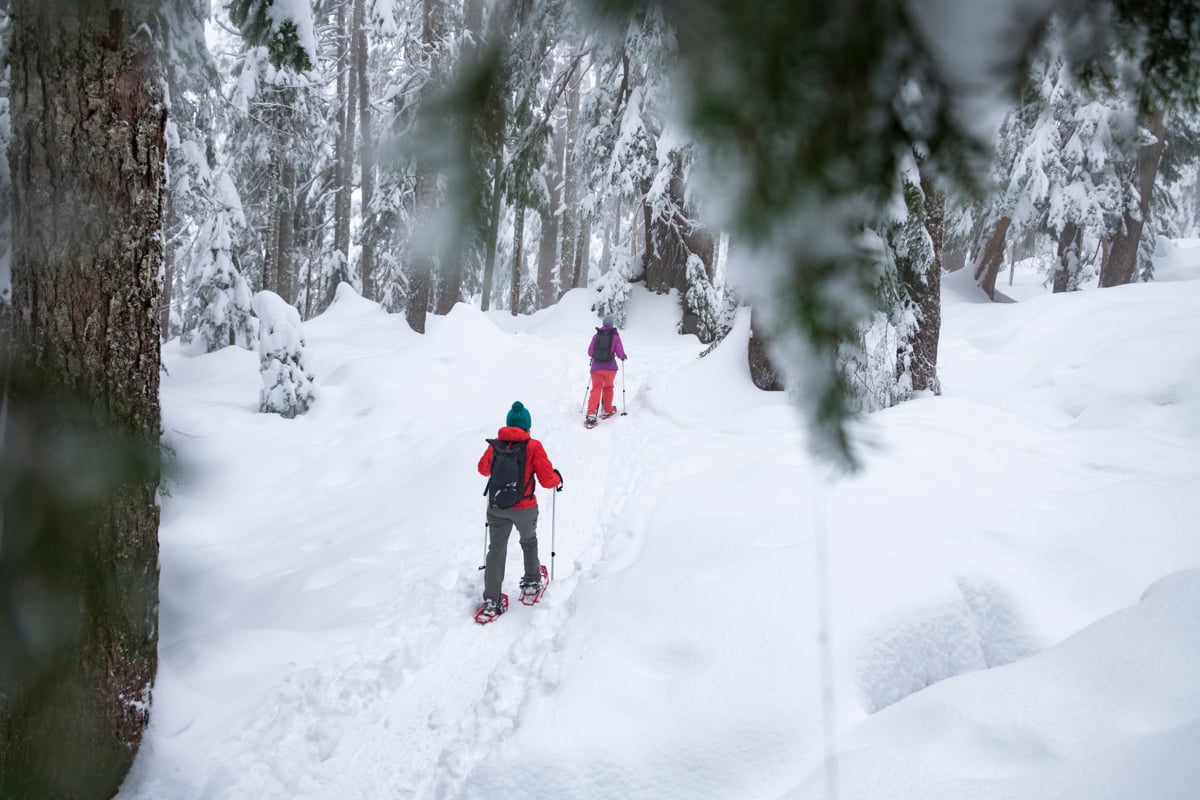
Snowshoeing
I know, big surprise coming from MSR, but snowshoeing is arguably the easiest and most accessible way to embrace winter away from the crowds. You can literally go anywhere there is snow. A good dump of snow can even transform your local state park into a whole new experience for a winter getaway close to home. The other big draw is cost. For the ridiculous cost of a single day of lift skiing, you can get your own pair of snowshoes and enjoy winter on your terms for years to come.
Finding a place to snowshoe is as easy as finding enough snow to warrant wearing them. In addition, many cross-country ski areas allow snowshoeing alongside groomed tracks (no snowshoes on the ski tracks, please!), making multi-sport getaways a great option. However, if all that money left over from not taking the lifts is burning a hole in your pocket, mix adventure with decadence at the Opus Hut in Colorado’s San Juan Mountains. A relatively safe, short 3.5-mile snowshoe through the glorious peaks of the San Juan Mountains ends in cozy, Euro-style hut lodging. Go ahead, walk with a small pack too. The Opus has all you need: warm beds, electricity, and meal + booze packages in a stunning location.
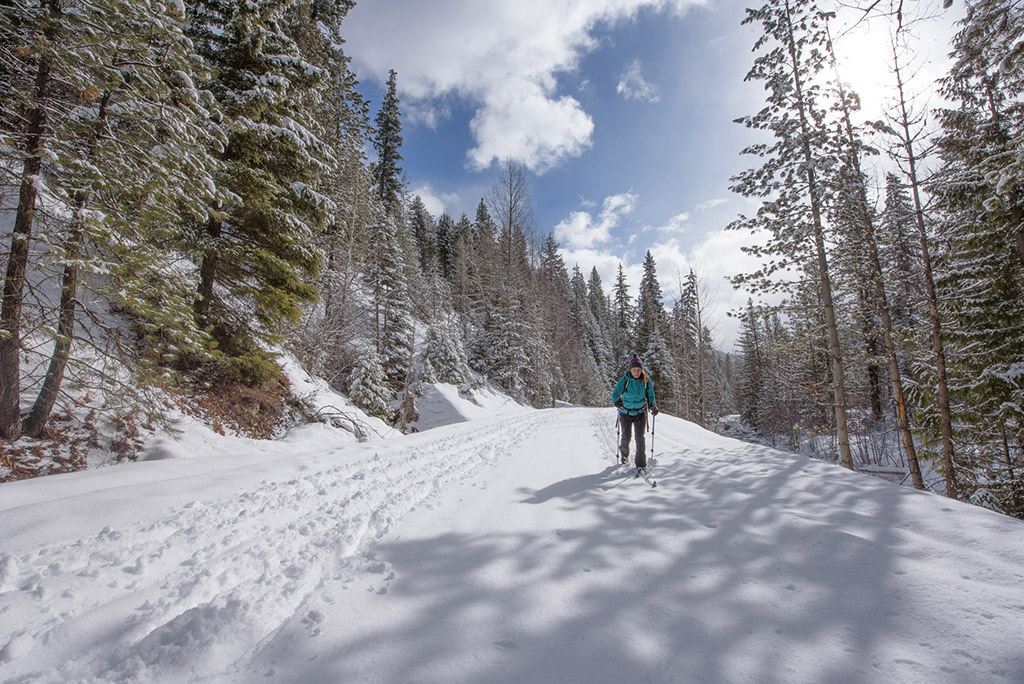
Cross-Country Skiing
Cross-country skiing on contemporary gear is just flat-out fun. It offers many of the same benefits as snowshoeing, but with the added plus of being able to glide, covering more ground with less effort. You can choose anything from a pretty casual day out to a full-on aerobic training session. The traditional kick and glide of “classic” mode can be done on an established track or used to forge your own path, while the dynamic, full-body movement of skate skiing requires the luxury of a groomed area. Either way, if you’ve never tried it, or it’s been a while since you have, it’s worth another look.
The zen of gliding over snow is hard to beat—unless there’s also a view. That’s where the TahoeXC ski area excels. Perched above the stunning blues of Lake Tahoe’s western shore, they offer over 50 km of groomed ski trails, with optional access to ungroomed trails for the more adventurous. They’ve also got dog-friendly trails for all those with new COVID canines or skijoring aspirations, and a full rental program so you can dip your toes into the sport with ease.
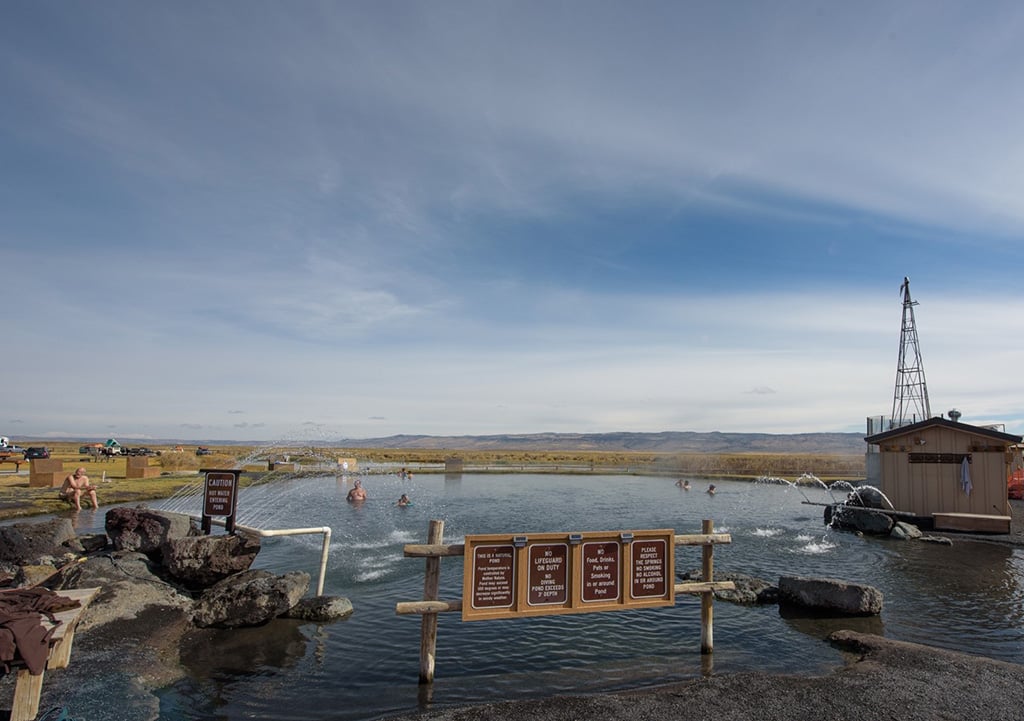
Hot Spring-ing
The juxtaposition of freezing cold and a sweat-inducing soak under a big sky is arguably one of the most relaxing gifts of winter. There are thousands of backcountry hot springs that are under-loved all winter long, and you can choose any of the aforementioned modes of locomotion to get to them. So, are you ready for the drop on the coolest hidden backcountry hot springs? Sorry, not a chance. But keep reading for the drop on one of the nation’s best frontcountry options.
For something completely different, a mid-winter road trip to Crystal Crane Hot Springs is hard to beat. Sitting quietly outside of the bustling metropolis of Burns, Oregon (pop. 2,783), the remote and largely undiscovered beauty of the surrounding basin and range geography is worthy of a lifetime of exploration itself (check Oregon Natural Desert Association for more info). This low-key, family-owned “resort” is a must-do destination for anyone that appreciates a good soak while feeling small in a big, big landscape. Year-round lodging options range from tent camping to private cabins, but the main event is a massive natural hot spring pond. It’s got a temperature and depth for every kind of relaxing. My personal recommendation is laying/floating in the shallows, with water just covering your ears for a mix of sensory deprivation and nighttime stargazing under one of the nation’s darkest night skies. Mind. Blown.
Reservations are highly encouraged for lodging, though the expansive, basalt gravel-lined pool rarely feels anything close to crowded. Be warned: you will fall in love with the beauty of the area.
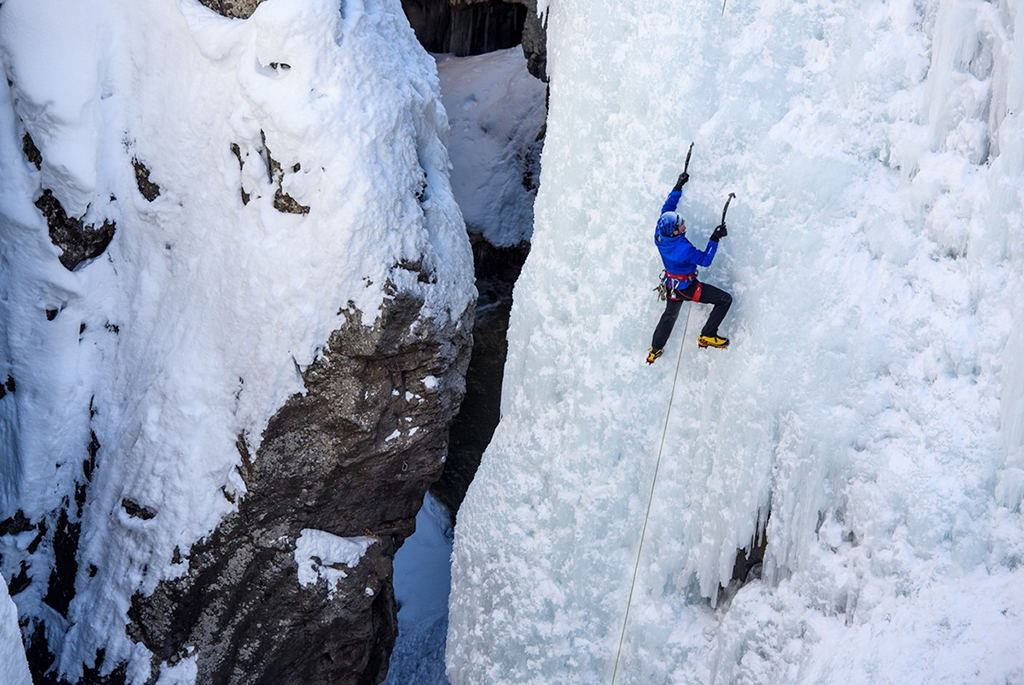
Ice Climbing
The legendary alpinist Jeff Lowe once said, in describing the allure of ice climbing, something to the effect of, “There’s just something about being totally in control, in a totally out-of-control situation”. Sure—hanging from a frozen sheet of water by two ice axes and a pair of steel points on your feet sure seems out of control. However, for first-timers with a guide and a top rope for safety, it’s a surprisingly safe, fun and accessible way to test both your physical and mental limits in a surreal environment. Moderately expensive to get into, it’s still less expensive than skiing and nearly all guide services offer rental options. I highly recommend saving your pennies and giving it a try—even for a short yet indelible memory.
While Colorado’s Ouray Ice Park is the lower 48’s mecca for an introduction to ice climbing, it’s not exactly easy to get to. The Northeast is hard to beat for ease of access and the Adirondacks of upstate New York are a hub for East Coast ice. In the winter, freezing temperatures bring throngs of people to Lake Placid’s famous winter playground. On the way there, they pass through Keene Valley—the heart of ice climbing in the area—and under the crampons of many adventurous souls, clinging to ice, high above the highway. First-timers and veterans alike need to check out Adirondack Rock and River. This small, beautiful lodge and guide service is located at the end of a long dirt road in the heart of the mountains, between Keene Valley and Lake Placid. Owner Ed Palen bailed on city life a few decades ago and stocked his dream lodge with a super-friendly staff, solid guides, great meals, a top-ropeable fireplace and all the rental gear you need. It’s about as easy and decadent an intro as possible to one of the coolest things you’ll ever try.
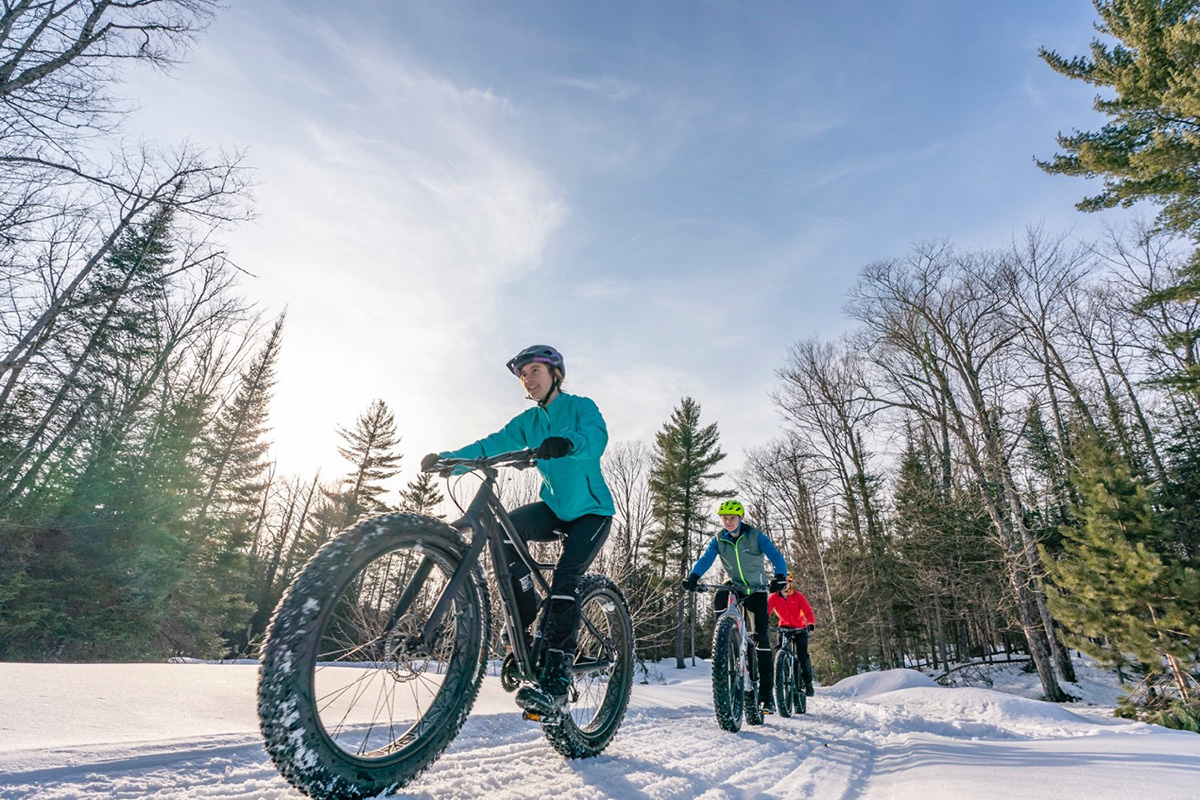
Fat Biking
Fat tires are like snowshoes for bikes. Tires up to 5.2 inches wide take what used to be a pretty hilariously treacherous winter sport and turn it into an amazing and cushy way to explore a lot of terrain in a day, or even overnight.
Fat tires with low pressure and the snowy trails you’ll use them on reduce the need for fancy suspension, so getting into a fat bike is typically a lot easier on your wallet than a mountain bike, and you can use one all year long over just about any terrain. There are more rental shops popping up all the time, as are fat bike-dedicated trail systems, so get out there and give it a go.
Lest we forget about the Midwest, the small-town vibe of Marquette, Michigan only adds to the coolness of this year-round outdoor adventure paradise. I’m not aware of any hot springs up there, but you can do everything else on this list within a stone’s throw of downtown. Perched on the wooded shores of Lake Superior, the surrounding hills host over 60 miles of fat bike trails to explore, with great rental options in town, too.
Of course, most of these activities can be had anywhere there is snow on the ground. So if you’re lucky enough to live near snow this winter, don’t let the crowded chaos of the resorts stop you from having a good time. Get out there and try something new. It might just become your new winter favorite.
Related Posts:
- 9 Tips for Staying Warm While Winter Camping
- Best Winter Camping Gear from MSR
- 6 Trip Ideas for Adventurous Family Camping
Updated. Originally Published January 19, 2021.

